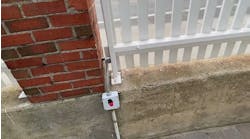Hearing protection, such as earplugs and earmuffs, can also save your fingers, toes, or even your life. Why is this?
When you enter an area, stop and listen for unusual sounds. These can include the hiss of steam, a transformer vibration that doesn’t sound right, sparking inside a distribution panel, or the approach of an oncoming lift truck. If you have protected your hearing, you will be able to detect the often barely audible sounds of impending danger.
Listening to people is also a good safety measure. Listen to the answers supervising operators give when you ask questions related to the area where you’ll be working. For example, you sign in at the central operating station for a job that is in area X of the plant. This is a good time to ask about other things going on in area X and in areas along the way. Is a crew testing pressure relief valves? Is a washdown taking place? What major equipment is running and what dangers could it pose?
Now when you get to area X, you see the local operators. Repeat the questioning and listening process. Does any of the information from the central operating station conflict with what you’re being told now? Try to resolve it with the local operators.
As you’re working, of course you want to focus your attention on what you are doing. But you also need to be alert for changes in the background noise. This is not a time to listen to music on your Bluetooth headset, talk casually with a coworker, or add any other audio distractions. Make a point of being aware of conditions at all times, at least those your ears can monitor.




